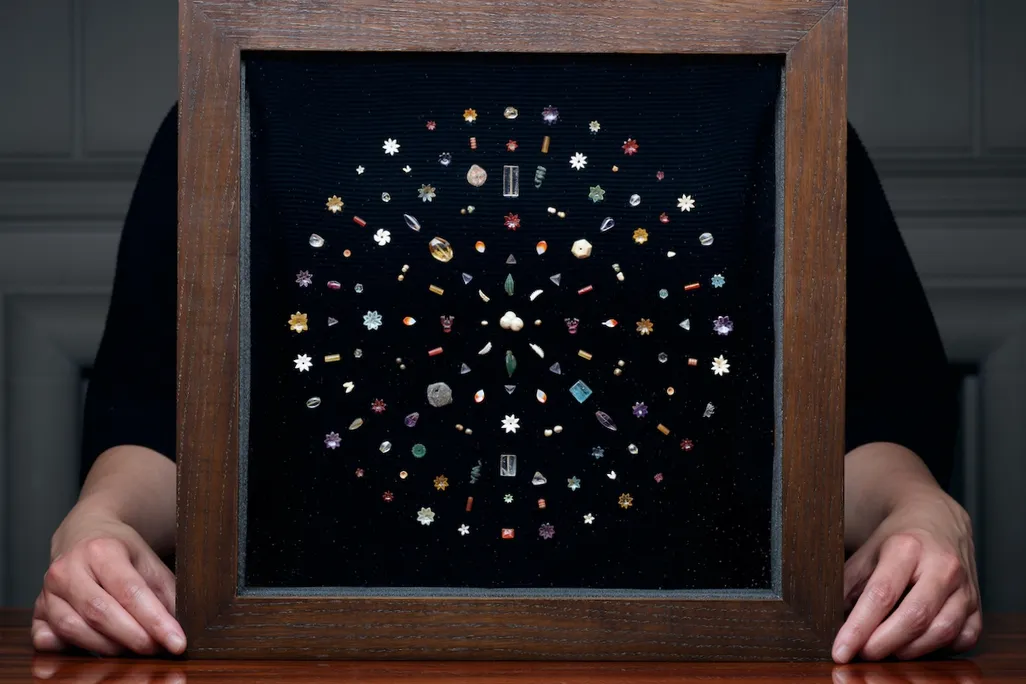WWW.SMITHSONIANMAG.COM
India Is Trying to Stop the Sale of Hundreds of Ancient Gems Associated With the Buddha
India Is Trying to Stop the Sale of Hundreds of Ancient Gems Associated With the Buddha
The 300 sacred jewels are part of a larger trove found in India in 1898. They’re scheduled to be sold by Sotheby’s Hong Kong, where bidding will start at roughly $1.3 million
The gems were found in a stupa in northern India.
Sotheby's
In 1898, British landowner William Claxton Peppé excavated an ancient funerary monument on his estate in northern India. The site revealed a trove of 1,800 jewels, as well as ash and bone fragments. According to an associated inscription, the remains belonged to the Buddha, who was thought to have been buried nearby.
On Wednesday, Sotheby’s Hong Kong is planning to auction more than 300 of the gems found at the site. The sale of the trove—which many Buddhists consider sacred—has prompted backlash among scholars, religious leaders and Indian government officials.
“These sacred relics … are part of India’s and the global Buddhist community’s spiritual and cultural heritage,” writes India’s culture ministry in an Instagram post. “[The] sale violates Indian laws, international norms and U.N. conventions.”
The Instagram post includes a photo of a legal notice the ministry sent to Sotheby’s. The notice asks the auction house to cancel the sale, repatriate the jewels to the Indian government, offer a public apology and provide the ministry with “all provenance documents” connected to the artifacts.The ministry writes that Sotheby’s “has responded to the legal notice with the assurance that full attention is being given to this matter.” However, the sale is still scheduled to proceed on May 7. As Artnet’s Richard Whiddington reports, the bidding will start at roughly $1.3 million.
Peppé’s estate was located in the village of Piprahwa, just south of India’s border with Nepal, and it held several Buddhist funerary monuments known as stupas. The site’s first stupa was likely built at the time of the Buddha’s death around 400 B.C.E., per Sotheby’s. Officials think the gems were placed at the site when the stupa was rebuilt around 240 B.C.E.
When Peppé ordered that the stupa be excavated, his workers found a vaulted chamber, according to an essay by Nicolas Chow, the chairman of Asian art at Sotheby’s. Inside the chamber was a sandstone chest containing five reliquaries (containers for holy relics), which held bones and ash alongside nearly 1,800 pearls, rubies, topazes, sapphires and other gems. One of the reliquaries was marked with a short inscription suggesting that the bone fragments belonged to the Buddha.
The gems were found by British landowner William Claxton Peppé, who handed over most of the collection and kept a portion for himself.
Sotheby's
The British crown ultimately claimed the items under the 1878 Indian Treasure Trove Act. The bone relics were presented to the king of Siam, while the “major pieces of gold and jewelry” were donated to a museum in Kolkata, according to an essay by Peppé’s great-grandson, Chris Peppé. “It is the small portion of duplicates that [William Claxton Peppé] was allowed to keep that have been kept in our family.”
Chris Peppé and two of his cousins inherited these items in 2013. After displaying the gems in museums around the world, the family decided to sell them at auction. But the sale of these items, which some Buddhists consider corporeal remains of the Buddha, has sparked criticism.
“The gems, and his bone and ash, all belong to the Buddha and shouldn’t just be sold to the highest bidder,” Conan Cheong and Ashley Thompson, art historians at the School of Oriental and African Studies University of London, write in an opinion piece for the Religion News Service. “And as researchers of Buddhist material culture engaged with current global debates around restitution, we see this sale as perpetuating colonial violence.”
Chris Peppé disagrees, telling BBC News’ Soutik Biswas that in the monasteries he has visited, “no Buddhists regard [the gems] as corporeal relics.”
The gems were exhibited at Sotheby's Maison in Hong Kong.
Sotheby's
“A few Buddhist academics at western universities have recently offered a convoluted, fact-defying logic whereby they may be regarded as such,” he says. “It’s an academic construct that is not shared by Buddhists in general who are familiar with the details of the find.”
But as Yon Seng Yeath, chancellor of Preah Sihanouk Raja Buddhist University and head of Wat Ounalom in Cambodia, tells thePhnom Penh Post’s Niem Chheng, “We cannot put things which carry the respect of so many human beings up for sale.”
“They are the representatives of the wisdom of Buddha,” he says. “In my opinion, all of the pieces should be kept at pagodas or other sacred places, such as museums, in any country which the owners prefer.”
Get the latest stories in your inbox every weekday.
